Birders up north are no doubt gearing up for the peak of spring migration across the eastern half of the continent. The middle of May is the most exciting and anxiety inducing period of the birder’s year. The mad rush to reach the boreal forest just after the thaw leaves little time for dillying nor dallying. Birds on their way north are on a mission, and the fear of waking up one morning having missed the entire parade is a real one that keeps birders up at night. Or, at least this birder.
But by the time the birds are piling up around the Great Lakes and streaming through the northeast the residents down in the south are well into their first broods, and it’s not unusual to come across evidence of their home-making even while you’re out looking for thrushes and flycatchers and grosbeaks still passing through every day.
Take that famous example of southern warblerdom, the Prothonotary Warbler. A bird so electric yellow that viewing it without safety precautions can cause temporary blindness, or madness, or both. Sure, you can find it across much of the eastern United States, even as far north as southern Canada but I ask you, are you really seeing a Prothonotary Warbler if you’re not watching it pick through a flooded forest in the south? That piercing song just means more when it echos from the other side of a cypress swamp, doesn’t it? Here in North Carolina, I can humbly brag that I see dozens of them every year, but seen well it’s still a breathtaker. Take, for example, this pair of birds I found investigating a cavity in northern Chatham County this weekend.
A pair were busy investigating a broken stump, though the real object of their interest, what I assume was an old cavity, happened to just be on the opposite side. No matter though, their attention was focused elsewhere and not on the guy with the camera 12 feet away.
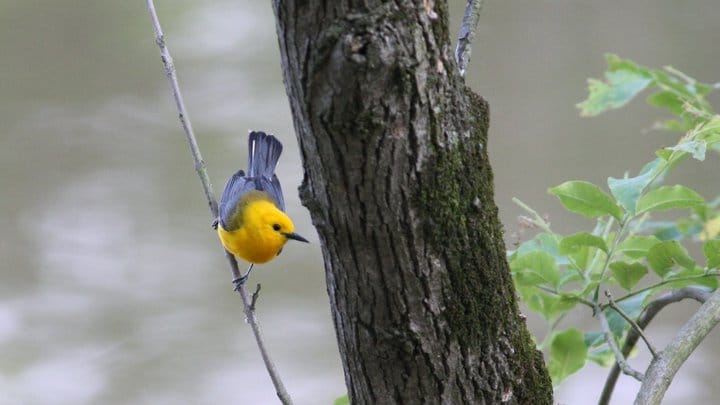
No less a source than John James Audubon called these birds “Golden Swamp Warbler”, a name that seems perfectly evocative for a retina-burning bird that favors slow water. But unfortunately for lovers of descriptive bird names, a name was already assigned by the Dutch naturalist Pieter Boddaert, who must have been a devout Catholic to assign the name Protonotaria citrea, referring to the prothonotarii, a group of church notaries who famously (but not really that famously) wore yellow hoods. That arguably the most beautiful of the North American wood-warblers is essentially named for Catholic pencil-pushers seems a misnomer. This is not a bird for cubicle farms!
It’s better that the species name, citrea, obviously refers to the French car-manufacturer Citroën, whose automobiles are known to be lemons*. Appropriate!
*may not be accurate.
The female bird came by too, a stunning bird in her own right if she didn’t have to constantly be compared to the ridiculous male.
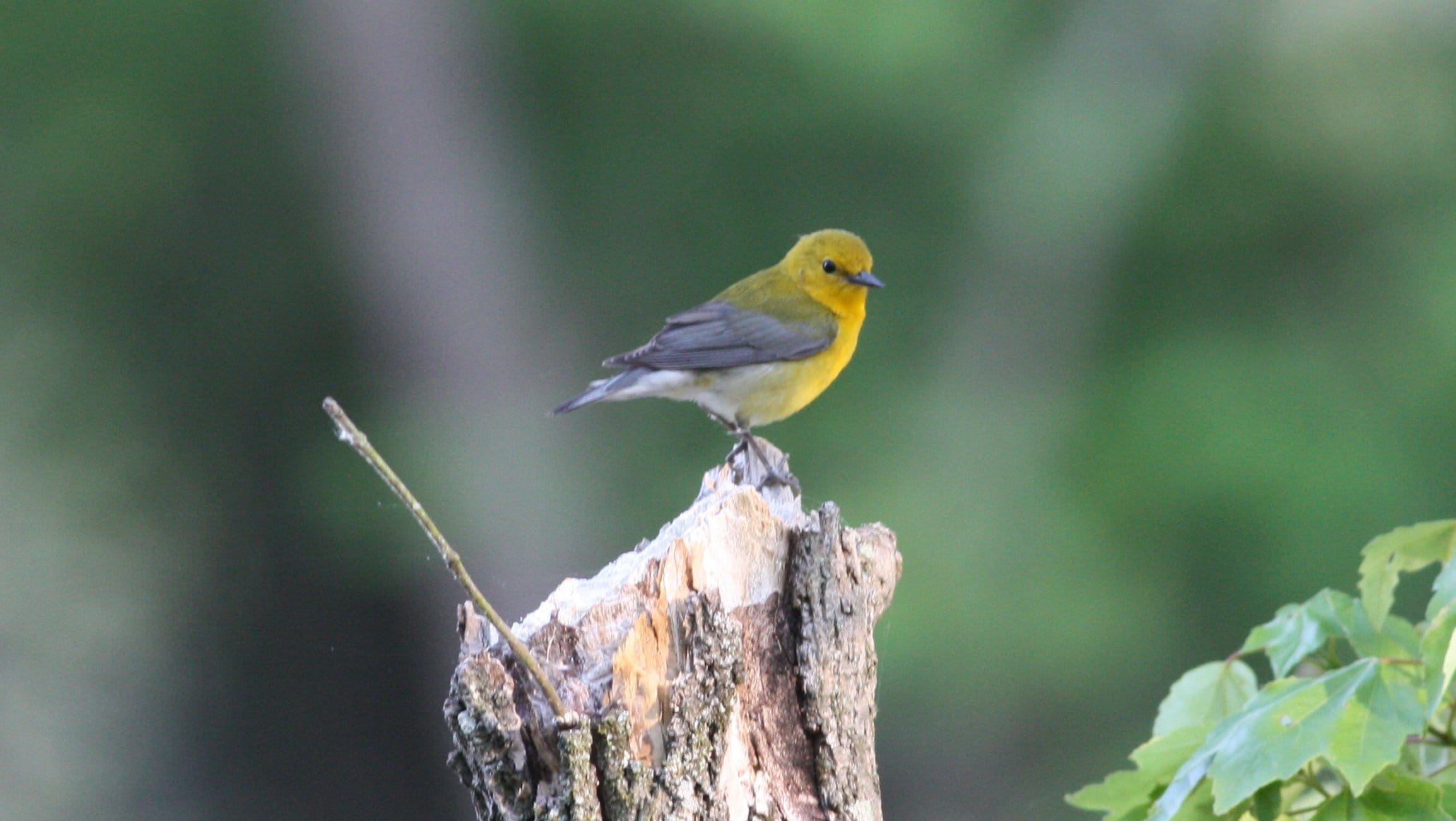
Her opinion matters, and he waits with baited breath.
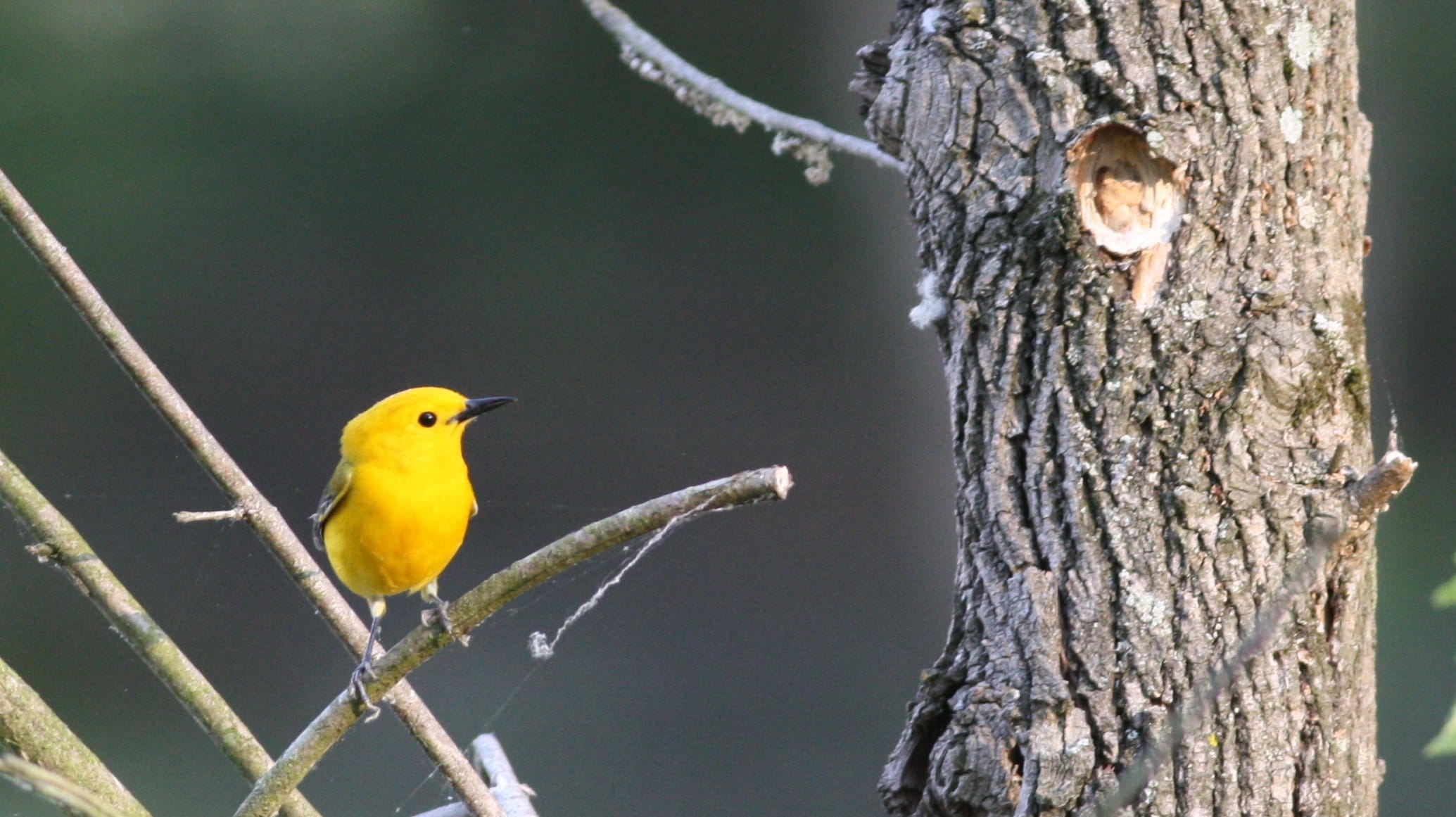
Success? It’s hard to read those implacable faces. But it certainly appeared that this tree stump just off the trail on a far arm of Jordan Lake would do.
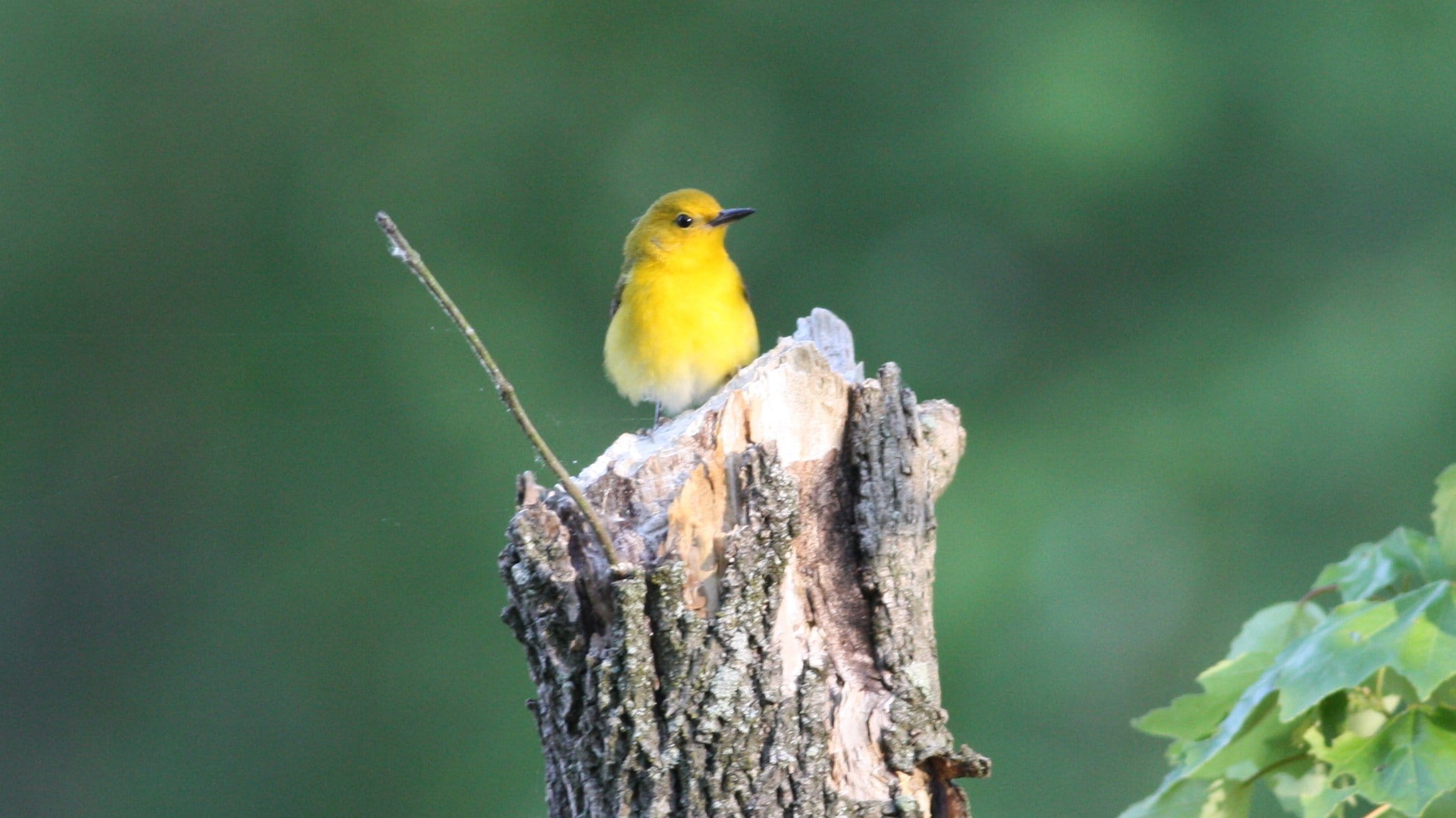
Proud cavity-owners! And a lucky birder to watch it happen. Now back to all the transient species that I can’t bear missing.


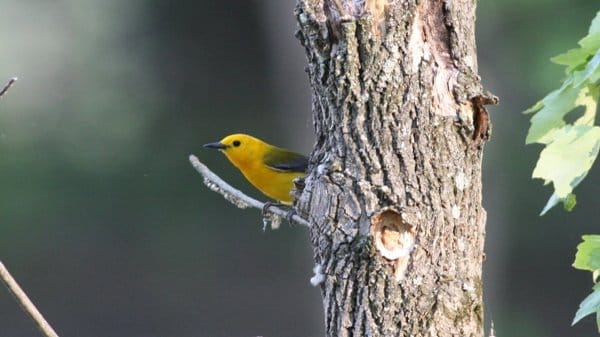











Gorgeous bird and text, Nate. I agree that prothos (do other people call them that or just me?) are best seen down South. I can think of days I’ve seen dozens in one morning; when the Golden Swamp Warbler is your trash bird for the day, you know you’ve been somewhere special!
Very nice write up and pics of this gorgeous bird. You are so right about them seeming to be out of place anywhere other than southern swamps. In Costa Rica, I see lots during the winter in mangroves and have seen small flocks of the Golden Swamp Warbler as it migrates along the Caribbean coast, but no matter how often I see that 14 carot bird, I still cant help but be reminded of those southern cypress swamps.
Have I told you lately, Nate, just how incredibly much I am looking forward to the return of our beloved Acrocephalus warblers to Germany?
I might actually see my first of the year today! Boy, does that have me excited!
🙂
And thanks a billion for explaining the name, something I have not heard explained by anyone around the warbler hot spots of lake Erie. And agreed, what a shame!
Sigh. That’s it, just “sigh.”
@Mike- Too true!
@Pat- Even I occasionally find them along wooded streams down here, but it’s just not the same.
@Jochen- If you’ve half as excited for the Acorcephali as I am for the Blackpolls, Magnolias, and Chesnut-sides I’ve yet to see this spring, you must be bursting.
@Clare- If it makes you feel any better, I feel the same way about your Gyrfalcons…
Just ran across your nice site researching a poem “Song of the Swamp” written by a forgotten famous Socialist leader named Mary Marcy (for a book I’m doing about Fairhope, AL). It’s a lovely poem about a swamp canary, as I call it.
They are wonderful, beautiful birds. Unfortunately, I never fully appreciated how pretty until a poor lost little one flew into my office window glass.
It was so colorful I couldn’t bear to bury it. Fortunately a local Alabama River Delta museum wanted it for their educational display.